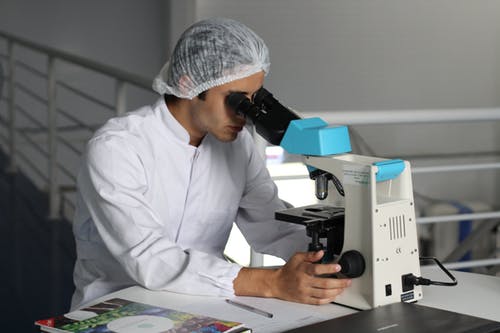关于COVID-19的无声传播者,我们知道些什么
关于COVID-19的无声传播者,我们知道些什么
Is it possible to be infected with the coronavirus and show no symptoms? Or go through a period of several days before symptoms kick in?
有可能感染了冠状病毒而没有症状吗?或者经历一段时间才出现症状?
And even in this stage with no cough, no fever, no sign of illness, could you be transmitting the virus to others?
即使在不咳嗽,不发烧,没有生病迹象的这个阶段,你能把病毒传染给别人吗?

"There is evidence that SARS-CoV-2 has this ability to spread silently," says Shweta Bansal, an infectious disease modeler at Georgetown University.
“有证据表明SARS-CoV-2具有无声传播的能力,”乔治城大学的传染病模型师施维塔·班赛尔说。
Indeed, cases of COVID-19 among nursing home residents, choir groups and familiesfuel a growing concern about people who are infected, yet feel generally OK and go about their daily lives, giving the virus to friends, family members and strangers without knowing that they themselves have it.
的确,疗养院居民、唱诗班团体和家庭中出现的COVID-19病例,加剧了人们对感染者的担忧,这些人虽然总体感觉良好,但仍在日常生活中活动,将病毒传染给朋友、家人和陌生人,却不知道自己也感染了病毒。
But there are wide gaps in our understanding of how many people fit this category of "silent spreaders" — as they're called by some public health researchers — and how much they contribute to transmission of the disease.
但是,我们对有多少人属于这类“无声传播者”(一些公共卫生研究人员将其称为“无声传播者”)以及他们对疾病传播的贡献有多大的认识还存在很大的差距。
Silent spreaders can be divided into three categories: asymptomatic, presymptomatic and very mildly symptomatic. Here's what we know about these variations.
无声传播者可分为三类:无症状,症状前阶段和非常轻微的症状。以下是我们对这些变化的了解。

Asymptomatic: people who carry the active virus in their body but never develop any symptoms
无症状者:体内携带有活性病毒但从未出现任何症状的人
"Nothing at all," says Tara C. Smith, an epidemiologist at Kent State University's College of Public Health. "No fever, no gastrointestinal issues, no breathing issues, no coughing, none of that."
肯特州立大学公共卫生学院的流行病学家塔拉·C·史密斯说:“什么都没有发生。”不发烧,没有胃肠道问题,没有呼吸问题,不咳嗽,都没有。”
As you might imagine, it's hard to figure out when someone has a disease but shows no signs of it.
正如你所想象的,很难判断一个人什么时候得了病,但却没有任何症状。
Some cases of asymptomatic carriers have been confirmed by finding and testing people who were in close contact with COVID-19 patients. For those who tested positive without symptoms, follow-up exams confirmed that about 25% continued to show no signs, World Health Organization officials said on April 1. citing data from China.
通过发现和检测与COVID-19患者密切接触的人,已确认了一些无症状携带者病例。世界卫生组织官员4月1日援引中国的数据说,对那些检测呈阳性但没有症状的人,后续检查证实约有25%的人仍然没有任何症状。
No one can truly determine the impact of asymptomatic cases on spread until there's more testing. But so far, they have made up a sliver of the total number of people who've tested positive. And the affected individuals seem to skew young.
在进行更多的检测之前,没有人能够真正确定无症状病例对传播的影响。但到目前为止,他们只占检测呈阳性的总人数的一小部分。受影响的个体似乎倾向于年轻人。
A small clinical study from Nanjing, China, followed 24 people who tested positive but didn't show overt symptoms at the time. In the one to three weeks after diagnosis, seven continued showing no symptoms. Their median age was 14.
来自中国南京的一项小型临床研究跟踪了24名测试呈阳性但当时没有表现出明显症状的人。在确诊后的一至三周内,有七名患者没有出现任何症状。他们的平均年龄是14岁。
"Can those people who are completely asymptomatic, who never develop any symptoms, transmit the infection? That's still kind of an open question," says Smith.
“那些完全没有症状,从来没有出现任何症状的人会传播感染吗?”这仍然是一个悬而未决的问题,”史密斯说。
Presymptomatic: people who have been infected and are incubating the virus but don't yet show symptoms
症状前阶段:已被感染,病毒正在潜伏,但尚未出现症状的人
After infection, symptoms might not develop for five to six days — or even two weeks, according to the Annals of Internal Medicine. The time between catching the virus and showing symptoms is called the presymptomatic phase.
根据《内科学年鉴》,感染之后,症状可能在5 - 6天内不会出现,甚至2周内也不会出现。从感染病毒到出现症状之间的时间称为症状前阶段。
How do these individuals figure into transmission?
这些人是如何感染的?
People appear to be most infectious right around the time when symptoms start, said Maria Van Kerkhove, technical lead for the WHO's Health Emergencies Programme, at an April 1 news conference. However, "we do have evidence, from testing and modeling studies, that suggest people who are presymptomatic can definitely transmit this virus," says Smith, the epidemiologist, most likely in the one to three days before they start showing symptoms, according to the WHO.
在4月1日的一次新闻发布会上,世卫组织卫生应急方案技术负责人玛丽亚·范克霍夫说,在症状开始的时候,人们似乎最具传染性。然而,据世卫组织称,“我们确实有证据,从测试和模型研究来看,表明症状前的人肯定可以传播这种病毒,”流行病学家史密斯说,最有可能是在症状出现前的一到三天。
So far, presymptomatic is a much more common category than asymptomatic. About 75% of people who test positive without showing symptoms turn out to be presymptomatic, displaying coughing, fatigue, fever and other signs of COVID-19 in a later follow-up exam, said Van Kerkhove.
到目前为止,症状前阶段比无症状更常见的。范克霍夫说,大约75%的人在没有表现出症状的情况下检测呈阳性,被证明是是症状前阶段,在随后的随访检查中表现出咳嗽、疲劳、发烧和其他COVID-19的症状。
Very mildly symptomatic: people who feel a little unwell from a COVID-19 infection but continue to come in close contact with others
非常轻微的症状:由于COVID-19感染而感到有点不适,但仍与他人密切接触的人

"We're very lucky that this isn't a severe infection for everyone, but because of that, some people feel a little sick and power through," says Seema Lakdawala, a flu researcher at the University of Pittsburgh.
匹兹堡大学流感研究人员西玛·拉克达瓦拉说:“我们非常幸运,这并不是对每个人来说都是严重的感染,但正因为如此,一些人感到有点不舒服,但还是挺过来了。”。
Spreading COVID-19 while having a cough or very mild fever doesn't fully count as silent transmission, says Bansal, the infectious disease modeler: "There's some signal there at least."
传染病建模师班赛尔说,在咳嗽或非常轻微的发烧时传播COVID-19并不完全算是无声传播:“至少有一些信号。”
But people who continue to frequent communal and public places with a light cough or mild fever may unwittingly spread the disease in the early days of symptom onset — the time they're thought to be most infectious.
但是,那些经常在公共场所出现轻微咳嗽或轻微发烧的人,可能在症状出现的早期就不知不觉地传播了这种疾病,这段时间被认为是最具传染性的。


















